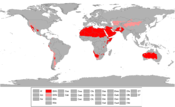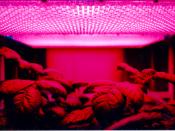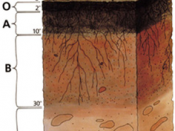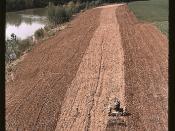Table of Contents 1: Introduction ...................................
2: Experiment ....................................
3: Discussion .....................................
4: Conclusion ....................................
5: Acknowledgments ........................
6: References .....................................
Introduction Plant growth in Nevada seems scarce in its desert climate. Aside from cacti and bushes, other plants known in arable lands such as in the east are not often naturally grown. Inhabitants of an area such as Nevada must grow greenery of their own. But the question inevitably arises: Which soil would work best for plant growth? With several types of planting soils available to man, it is uncertain which choice would best suit for efficiency and quality of production purposes. The only way to attain the proper answer is to conduct an experiment. Through experimentation, substantial conclusions can evoke answers to a trivial hypothesis such as this. With the new found data, residents in Nevada or in other dry climates of the country can be sure to plant with the proper soil.
Experiment In the early stages of a project, it is appropriate to collect all supplies needed to conduct the experiment. Tools and gear such as rulers to measure with, a camera to record visual evidence, containers to carry the plants, and paper and pen to record all information, were necessary in facilitating the task at hand. The so-called 'meat' of the project required specific elements in the production of the experiment. The first object needed was the plant itself. Grass was decided upon to suit the growing process. Then the different variables were added to the list. The soils are a vital part. Clay, sand, topsoil, and artificial potting soil were bought. Having planted fifty plots of grass, with equal amount of seeds, water, and care, it was a matter of waiting and watching for the greens to flower. Of course, however, varying details were taken in account. There were constants to oversee and incorporate. Constants such as the amount of water, given sunlight, use of fertilizer, and the type of container were factored in. The artificial potting soil remained the constant throughout the trial.
As the plants began to show signs of peeking, criteria standards became an issue.
Deciding upon what attribute to focus on posed another question: What should be the focal standard in this experiment? Height, color, and roots could all be points to aid in finding the conclusion to the hypothesis. It was all a matter of choosing the right one.
The problem was settled by deciding to use all three attributes.
Every three days, data was recorded. The height was measured, the color logged, aand the roots under close eye. The taller the grass, the more colorful it was, and the more matured roots there were was evidence of productive plant growth. Along with writing the information, the camera came in use when taking the visual evidence. Finally, when the plants had grown to their full potential for the time being, and the log book was caught up with all necessary information, the experiment came to a close but satisfying conclusion. It then became time to transfer all of the data to charts and into a research paper.



